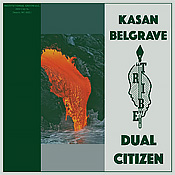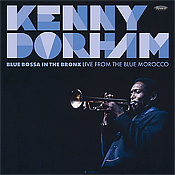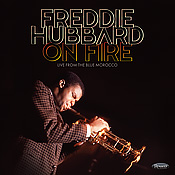Recent Recordings by Area Jazz Artists

Saxophonist, flutist, and clarinetist Kasan Belgrave has established himself as a musician of stature on the Detroit jazz scene. Guided from a young age by the best of his father’s colleagues such as Wendell Harrison, he received rigorous training in the Motor City pedagogical and artistic styles from the elders rather than grow up through the ranks in school orchestras as is usually the case with young musicians. He continued his studies at the University of Michigan and assisted at Michigan State and since then he has performed with musicians of all generations at home and elsewhere. Area listeners have had many opportunities to hear him at assorted venues with groups of diverse musical styles, working on jazz standards and new compositions, as well as a leader of his own combos, developing a collective new set of perspectives with a similar minded assortment of equally brilliant musicians of a generation committed to continuing and invigorating the deep Detroit jazz tradition. Belgrave and his friends, all well trained, take their art very seriously and apparently he felt that it was time to release his first CD, a well-prepared recital that mainly features his alto saxophone playing but also focuses on his compositional skills, as seven of the ten compositions here are from his pen. The album is Dual Citizen, with Belgrave on alto and tenor saxophones as well as flute, in tandem with Allen Dennard, trumpet; Michael Abbo, trombone trumpet, bass; Brendan Davis and Jordan Anderson, keyboards; Jonathan Muir-Cotton and Robert Hurst, bass; and Louis Jones and Michael Reed, drums.
The opening “Stepback” sets the tone, exemplifying the leader’s communal intentions, starting with a quartet. His alto plays the melody, but Davis is right behind him with fleet piano explorations written in, while Jones contributes busy commentary and multi-instrumentalist Abbo contributes a compact bass solo. The next tune, “Down 4 the Cause,” written by bassist Robert Hurst, one of Belgrave’s teachers at the University of Michigan, brings in a different combo with the composer on bass, now a quintet this time featuring Abbo on trumpet, whose thoughtful solo is followed by the equally restrained imaginative outings by the leader and pianist Anderson.
Herbie Hancock initially conceived of “Madness” as a slow, waltz-tempo tune, but during the Miles Davis recording session that resulted in the album Nefretiti, it morphed into an up-tempo one in 4/4 time. Belgrave shows his deep knowledge of history as he reworks the original leisurely version that was only made available three decades later in the form of a short fragment. There are no individual solos here, just Dennard and Belgrave presenting variations in tandem, with the piece fizzling out as in the brief original. This tribute signals Belgrave’s obvious affinity for the middle- and late-sixties Miles Davis quintet, a spirit that permeates much of this album without any outright imitation. He clearly admires the polyrhythmic abandon of that group, but his drummers tackle the inspiration in their own ways. Belgrave has developed an original, immediately identifiable alto saxophone sound and built a harmonically sophisticated improvisational approach, tempering youthful bravado with a cooling effect that reveals an empathy for the work of Lee Konitz.
The pervasive post-bop atmosphere of Dual Citizen is presented here in harmonically and rhythmically updated fashion as these young men are not immune to other musical trends of their own time even if they incorporate them lightly here. The title tune — the shortest one on the album — features the Detroit rapper Brizzl performing in a swinging jazz context that ends with some of the most out playing on the CD and a gentle funk element comes in on “Switch Lane,” driven by Muir-Cotton on what sounds like an electric bass.
Dual Citizen provides a wonderfully designed introduction to Kasan Belgrave but also functions as a manifesto of sorts for a collective of accomplished talented musicians that is emblematic of a generation that is extending the Motor City jazz tradition into the twenty-first century.

The non-profit Resonance label has been releasing unheard sessions by masters of years gone by that provide new light on their work in everyday performance environments. This month brings us two wonderful albums led by two of the best trumpet players in jazz, recorded in their prime in 1967 at the short-lived Blue Morocco nightclub in the Bronx and both of them feature stellar playing by members of the Detroit diaspora. The first of these is Kenny Dorham, Blue Bossa in the Bronx: Live from the Blue Morocco, with Sonny Red, alto saxophone; Cedar Walton, piano; Paul Chambers, bass; and Denis Charles, drums. The reason we feature this recording here is the presence of Red and Chambers, who in so many ways contribute to the success of the session. Mississippi-born Sonny Red (Sylvester Kyner) grew up in Detroit where he attended Northern Senior High School together with future jazz masters such as Curtis Fuller, Tommy Flanagan, or Donald Byrd and jammed at the famed homes of Joe Brazil and Barry Harris. He finally settled in New York in 1959 and had a long career as a performer and teacher. While his style was firmly rooted in early bebop, especially in the stylings of Charlie Parker and the way these were adapted by the Pontiac-born Sonny Stitt, he developed his characteristic somewhat acerbic tone and sense of harmony that was all his own. On this evening, he was joined by an old friend from his Northern days and from countless club and recording sessions thereafter, the well-known bassist Paul Chambers, less than two years before his death, but playing here in his standard stellar manner, driving the band with acumen but also contributing characteristically excellent solos, even if his characteristic bowing was not on display on this set.
For those who treasure Dorham’s lyrical trumpet playing, this is a major find. He did not maintain a regular working group, but it is evident that he played with Red and Walton and various bassists and drummers around that time, as documented in a date recorded at the Half Note in New York in February of 1966, and there are apparently other unpublished club recordings by them from the time. On the new album Dorham plays an interesting repertoire: “Confirmation” comes from his time when he replaced Miles Davis in Charlie Parker’s quintet; “Blue Friday” was recorded earlier on his lovely Quiet Kenny album; and his most famous composition, “Blue Bossa,” played to death by aspiring jazz musicians everywhere, is otherwise only documented by a performance by the composer on its debut on Joe Henderson’s Page One. In typical club fashion of the times, there is also a “ballad medley,” with Red in great form of “Memories of You,” that segued into “My One and Only Love,” with Dorham at his lyrical best, and the set ended traditionally with “The Theme.”
In the sixties musicians often played on a regular basis in clubs and understandably there were good nights, bad nights, and indifferent nights. This was an inspired one, with everyone in great form, including Dennis Charles who was generally associated with Cecile Taylor, Archie Shepp, and Don Cherry at the time but here provides excellent traditional swinging support, working very well in tandem with Chambers. This is a good way to recall the artistry of Kenny Dorham but also of both Sonny Red and Paul Chambers.

The second Resonance release is by the fabulous trumpeter Freddie Hubbard, On Fire (resonancerecords.org) with Bennie Maupin, tenor saxophone; Kenny Barron, piano; Herbie Lewis, bass; and Freddie Waits, drums. This is a double CD with almost two hours of playing from two sets of the evening. Unlike the Dorham set, this features a working band presenting the leader’s compositions and a few standards. The first set opened with a lengthy workout on the leader’s justly famed compositions “Crisis” and “Up Jumped Spring,” proclaiming that the band was already fired up, as was usually the case when Hubbard was on the stand. The leader was truly in fine form that night and his long solos, the first with open horn, the second muted, are spectacularly full of verve and invention, and it is fascinating to compare these with his less exuberant recorded versions. His improvisations on the initial “Crisis” seem to burst at the seams with invention from the moment go, with his characteristic long lines, harmonic extensions, and chromaticism, all done with bravura trumpet technique. Maupin takes it over with a more tempered approach, building it up to a climax and then taking it down somewhat to explore the tune further, demonstrating his own formidable command of the horn and harmonic sophistication, the excitement continuing with Walton’s more blues inflected exploration and then the leader once again offers a virtuosic return on the long minor chord vamp that ends “Crisis.” The tempo then comes down for “Echoes of Blue,” a sultry blues featuring an extensive virtuosic bass solo which lead into a down home, often growling, dramatic set of choruses by the leader with a hard driving rhythm section in full drive that must have been one of the high points of the set. This is the closest that the group came to a slow tune or ballad on that evening, which was definitely on fire!
This date ranks together with Maupin’s earliest recordings: he had taken part in two sessions led by saxophonist Marion Brown in 1966, and earlier in 1967 had been on You Had Better Listen by the Jimmy Owens-Kenny Barron Quintet. His years with Lee Morgan, Miles Davis, and Herbie Hancock that would bring him more attention were still ahead of him, and it would be another seven years before he was featured on his own album. He sticks to the tenor saxophone, revealing his own approach influenced by Coltrane and Joe Henderson. Three years later he would take part in the Davis sessions that resulted in the album Bitches Brew, this time on bass clarinet, an instrument he continues to explore to this day.